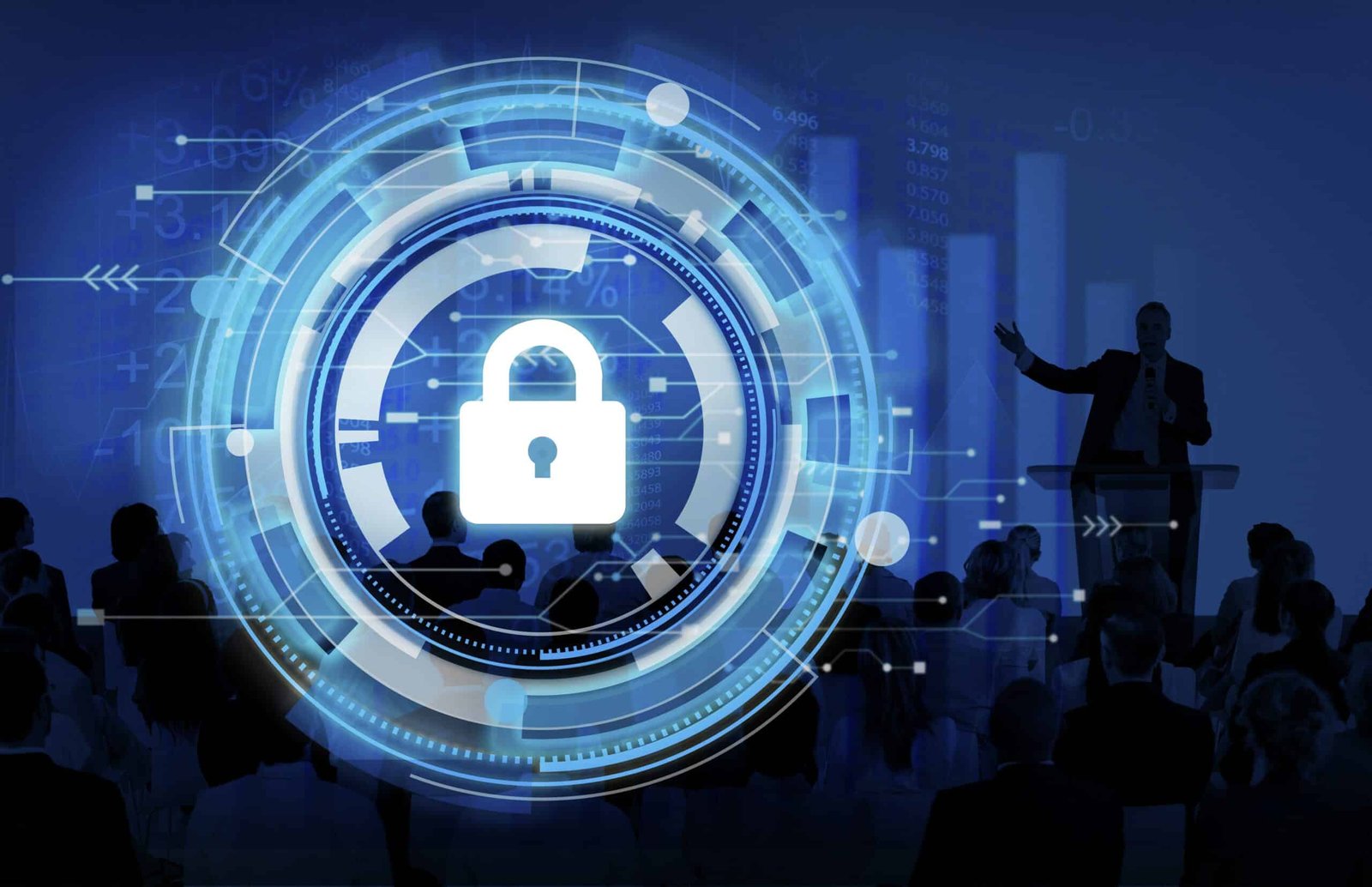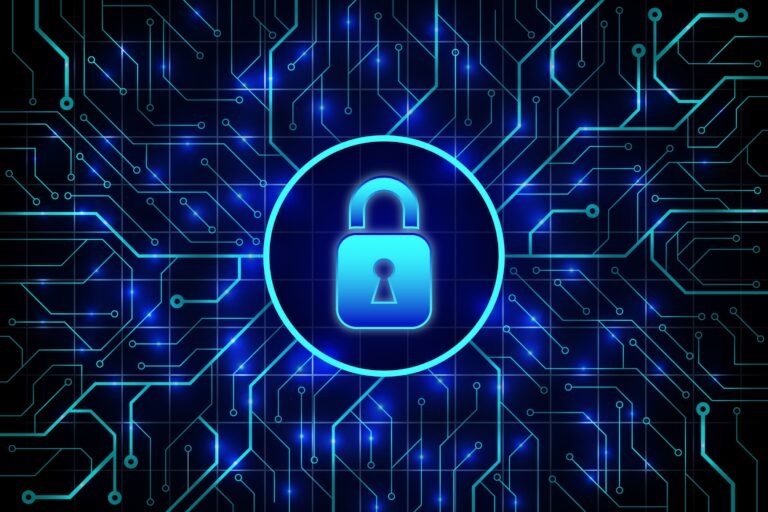Why is The AAA Protocol Important in Network Security?
Imagine your computer network as a vault filled with valuable information. AAA (Authentication, Authorization, and Accounting) protects this vault for you like a security guard.
First, AAA verifies a user’s identity by checking IDs. This ensures that only authorized people can access the network, keeping out any imposters. Then, AAA acts like a bouncer, controlling what parts of the vault a user can access depending on their permission level. Finally, AAA keeps a log of user activity, similar to security cameras, allowing for investigation. With these steps, AAA protects your network and ensures that only authorized users can access sensitive information.
What is Authentication, Authorization, and Accounting (AAA)?
Keeping your network secure is like protecting your beautiful home. AAA (Authentication, Authorization, and Accounting) acts like a security system for your network, It is designed to control access to computer resources, enforce policies, and provide a comprehensive audit of user activities.
Imagine your computer network is a high-security building. AAA (Authentication, Authorization, and Accounting) acts like a three-step security system to keep it secure for you so, here we start:
- (Authentication): This is like checking someone’s ID at the door. AAA verifies a user’s identity with a username and password, or maybe even a fingerprint scan. This ensures only the right people can enter the building (or network).
- (Authorization): Once someone’s ID is checked, they might only be allowed in specific areas, like a manager having access to the whole office. Similarly, AAA controls what parts of the network a user can access based on their permission level.
- (Accounting): The security system might keep a record of who enters the building and what they do in different areas. AAA does the same for the network, tracking user activity. This helps identify suspicious behavior and investigate any problems.
Think of AAA (Authentication, Authorization, and Accounting) as a three-part lock on your network’s vault. It verifies users’ identities (checking IDs), controls what they can access (granting permission levels), and keeps a log of their activity (like security cameras). This keeps out intruders, protects sensitive information, and provides a clear history for audits and following the rules.
Understanding AAA Protocol
Imagine your computer network as a high-security club. AAA (Authentication, Authorization, and Accounting) acts like a three-step security system to keep it exclusive: 1. Checking IDs (Authentication) ensures only the right people enter. 2. Bouncer duty (Authorization) controls who gets access to specific areas. 3. Keeping track of guests (Accounting) monitors activity. This keeps unwanted visitors out and protects the valuable information for you.
- Authentication: This is like the bouncer checking your ID at the door. AAA verifies you’re a real user by comparing your login information (username and password) to a list of authorized users. Only approved users get past the bouncer (authentication)!
- Authorization: Once you’re in, authorization decides if you can enter the VIP area. Similarly, AAA checks what parts of the network you’re allowed to access based on your role (regular user or someone with special access). Regular users might only be allowed in the general areas, while VIPs (like admins) can access the exclusive VIP section (special network resources).
- Accounting: The club might track what drinks you order. In the network, AAA keeps a log of your activity – how long you were logged in, what information you accessed, etc. This is like a record keeper and helps identify any suspicious activity or unusual access attempts.
By using these three steps (AAA), organizations can make sure only the right people get access to what they need, keeping sensitive information secure and the network running smoothly for you. It’s like having a layered security system at the club to ensure only authorized people get in and do what they’re supposed to do! Okay, now moving on to the next topic.
The Importance of Authentication
Imagine your network is a house, and authentication is the lock on the door. This lock checks who you are before letting you in. It’s super important because it keeps strangers (hackers) from getting to your valuable stuff (data) inside the house (network).
There are different ways this lock can check you:
- Something you know: This is like a password or PIN.
- Something you have: Think of a keycard or a security fob.
- Something you are: This could be a fingerprint scan or facial recognition.
The best locks use more than one check. This is called Multi-Factor Authentication (MFA). It’s like having multiple locks on your door!
Why are good locks important?
- They keep your stuff secure from being stolen (data breaches).
- They stop people from pretending to be you (identity theft).
- They follow the rules (regulations) some places have for keeping things secure.
- They make people trust that their things are secure.
In short, good authentication is like having a strong front door for your digital world. It’s the first line of defense that protects everyone’s important information.
Authorization- The Gatekeeper of Network Resources
Imagine you finally get past the security guard at a building (authentication). Now, authorization is like another security check inside the building to see where you can go.
Here’s how it works:
- You get a badge that says “Sales” (your role).
- Different areas require different badges (permissions).
- The security guard (authorization) checks your badge and lets you into the areas your role allows, like the sales floor (reading files) but not the finance department (restricted access).
This is important for a few reasons:
- Only authorized people see important stuff: Just like some areas in the building are off-limits, authorization keeps people from seeing things they shouldn’t on the network.
- Less chance of mistakes: By only giving people access to what they need, there’s less risk of them accidentally messing something up.
- Follows the rules: Sometimes there are laws about who can see certain information. Authorization helps follow those rules.
In short, authorization is like another layer of security that makes sure people can only do what they’re supposed to do on the network. It keeps things secure and organized!
Accounting- Keeping Track of Network Usage

Imagine you got permission to enter certain areas (authorization). Now, accounting is like someone keeping receipts for everything you do in those areas.
This record keeper tracks things like:
- When you checked in and out (session start and end)
- How much stuff you downloaded and uploaded (data transmitted)
- What websites and programs have you used (services accessed)
- Any changes you made (like editing files)
This record of receipts is helpful for a few reasons:
- Keeping things running smoothly: They can see how much everyone is using the network and adjust things to make sure it works well for everyone.
- Fairness: If you’re using a lot of data or programs, it might cost more, just like paying for what you use at a store (billing and cost allocation).
- Catching problems: If someone is doing something suspicious, the record keeper can help find them (security and compliance).
- Planning: By seeing how much people use the network, they can plan for when they might need more space or faster speeds (trend analysis and capacity planning).
Accounting isn’t about spying on people, it’s about making sure everyone uses the network fairly, securely, and efficiently. It’s like having a record of everything to keep things accountable and running smoothly.
AAA Protocol in Action
Imagine your network is like a high-security building. The AAA protocol is like a three-step system that keeps everything secure and running smoothly.
AAA stands for Authentication, Authorization, and Accounting. Here’s how it works:
- Authentication (Checking your ID): This is the first step, like showing your ID to enter the building. It verifies that you are who you say you are and not an imposter trying to sneak in.
- Authorization (Knowing your role): Once you’re inside, authorization checks your role (like ” janitor” or “CEO”) to see which areas you can access (like the cleaning closet or the executive floor). This prevents people from going where they shouldn’t.
- Accounting (Keeping receipts): Finally, accounting keeps track of everything you do inside (like cleaning rooms or attending meetings). This is like keeping receipts – it helps manage resources fairly, catch suspicious activity, and plan for the future.
The AAA protocol is like a security guard and record keeper working together. It ensures that only authorized users can access the network, they can only do what they’re allowed to do, and everything is tracked for accountability. This keeps the network safe, and efficient, and makes sure everyone follows the rules!
This is why AAA is a super important part of modern network security!
Challenges and Considerations
Even though AAA (Authentication, Authorization, and Accounting) is great for network security, setting it up can be tricky. Here’s why:
- Scalability: As more devices and people use the network (imagine a crowded room), AAA needs to handle everyone without slowing things down.
- Interoperability: If your network connects to other systems (like visiting a friend’s house with different rules), AAA needs to make sure everyone understands each other’s security stuff.
- Policy Management: Giving people access to what they need (like letting friends into their room to play games) is important, but AAA also needs to keep things secure (like keeping out strangers).
- Security of the AAA System Itself: Imagine a super strong lock on the AAA system itself. Hackers might try to break this to get into the network, so AAA needs strong defenses.
- Regulatory Compliance: Different areas (like countries) might have different rules about network security (like who can see what). AAA needs to make sure your network follows these rules.
- User Experience: Security is important, but AAA shouldn’t make it super hard for people to use the network (like having a million passwords).
If you can address these challenges, AAA can be a powerful tool to keep your network secure and running smoothly!
The Future of AAA Protocol in Network Security
The world of computers and networks is always changing, and so is how we keep them secure now. The AAA system (Authentication, Authorization, and Accounting) is a key part of this, and even though it’s great, it needs to keep up with the times.
Here’s what to expect for AAA in the future:
- Smarter Security: Imagine super-smart guards that learn and adapt. New technology like AI and machine learning will help AAA systems be even better at catching suspicious activity.
- Working Together: Just like different countries need to speak the same language, future AAA will make sure different computer systems can understand each other’s security stuff.
- Stronger Locks: Passwords alone won’t cut it anymore. Think of fingerprints, codes on your phone, or even recognizing your face – these will be more common ways to unlock the network.
- Spreading the Responsibility: Imagine security guards working in teams, not alone. New ideas like blockchain will help share the responsibility of who controls access, making things even more secure.
- Following the Rules: Just like traffic laws keep us secure on the road, future AAA will make sure computer networks follow the rules set by different areas.
- Making it Easier: Security shouldn’t be a hassle. Future AAA will try to make sure people can still use their computers and phones easily, even with all this extra protection.
By keeping up with the latest advancements, AAA will stay strong and keep our networks safe in this ever-changing digital world.
In conclusion
With the rise of cyber threats, AAA (Authentication, Authorization, and Accounting) acts like a security guard for our digital world. It checks who users are (authentication), controls what they can access (authorization), and keeps a log of their activity (accounting). This three-step process helps keep bad guys out and protects our important information. Even though there can be challenges with making it work for everyone and across different systems, AAA is constantly improving with new ideas like using artificial intelligence and fingerprint scanners. This means our networks and data will be even more secure in the future.
FAQS
What is the AAA Protocol, and why is it important in network security?
The AAA Protocol stands for Authentication, Authorization, and Accounting. It’s a crucial framework in network security that ensures only authorized users gain access to resources, controls what actions they can perform, and tracks their activities for accountability.
How does the AAA Protocol enhance authentication in network security?
Authentication verifies the identity of users or devices trying to access a network. The AAA Protocol strengthens authentication by requiring multiple factors such as passwords, biometrics, or security tokens, making it harder for unauthorized entities to gain entry.
What role does authorization play in the AAA Protocol?
Authorization determines what resources or services authenticated users can access and what actions they can perform. With the AAA Protocol, network administrators can define granular permissions, restricting users to only the resources necessary for their roles, thus minimizing the risk of unauthorized access.
How does the AAA Protocol contribute to accounting in network security?
Accounting involves tracking and logging user activities on the network, providing a trail of events for auditing and analysis. The AAA Protocol ensures comprehensive accounting by recording details such as who accessed which resources, at what time, and what actions were taken, facilitating forensic investigations and compliance with regulatory requirements.







